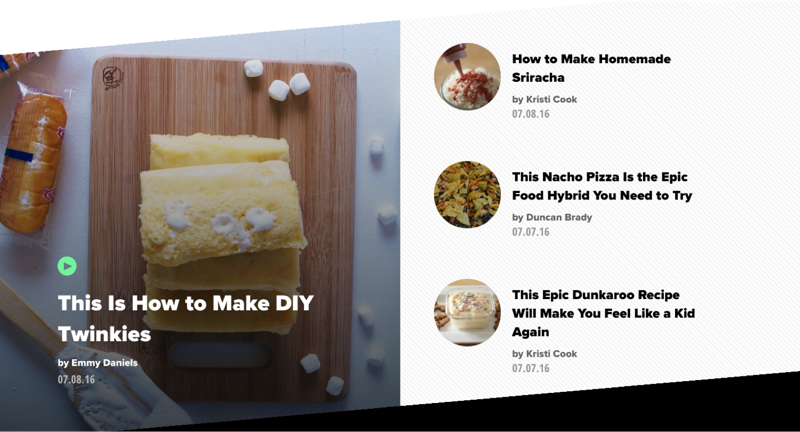
Spoon University was founded in 2013 as this generation’s trusted online resource for all things food and lifestyle related. Anyone interested in learning more about food (whether they’re in college or not) can check out the site, and engage with a wide range of food-related content made by students on campuses around the world. Students can join teams on their campuses or in their cities, get trained in digital media and marketing, and start producing content that’s seen by millions of people.
I had the opportunity to catch up with Matt Lovan, Spoon's director of engineering, who told me more about what it takes to build an online resource for Generation Z food novices worldwide:
_ Hi Matt, what can you tell us about Spoon and the food movement? _
At a time when food is becoming part of young people’s lifestyles and identities, we help people all over the world navigate the educational and practical aspects of food and food preparation a little more easily. We have simple recipes on the site that you can make in a dorm room or a tiny first apartment, and tons of hacks and how-tos that are only obvious once you know them. Plus, we share all the food news everyone’s going to be talking about, like the best local restaurants and the craziest Instagram food trends. All of the content on Spoon University is created by and for this generation, so it’s naturally way more authentic and relatable than everything else that’s out there.

_ Can you talk us through your current infrastructure? _
Spoon University is built on a distributed architecture using several different technologies. User management, user training, and content analytics is managed in a Ruby-on-Rails application. User content is created in WordPress, hosted by a third-party, but we’re currently in the process of creating a custom CMS in our Rails application. The frontend is powered by a Docker cluster of node servers that pulls content from MongoDB and Elasticsearch.
_ Prior to using Cloud 66, what sort of problems were you trying to resolve, and how were we able to offer support? _
We were a little challenged due to having to manage container deployments to multiple IaaS providers. Our back-up systems were also spread across several IaaS providers and regions for redundancy purposes. I was looking for a solution to automate the deployment process and help manage backing-up our database. I also wanted to find a way to better utilize a ton of free credit we had with various different cloud vendors.
Thanks to you guys, I've practically reduced my infrastructure cost to zero, as I was able to mix and match my cloud providers based on available credits. My team of developers can easily deploy new code without needing to interact with various APIs to manage infrastructure, which has been great.

_ That's awesome to hear. What are some of your favourite Cloud 66 features? _
Cloud 66 has been a great stepping-stone for us as we move to control more of our infrastructure. I like how we've been able to standardize our workflow across multiple IaaS providers thanks to the multi-cloud deployment capability. The ease of cloning stacks and import/backup data saves a huge amount of time, as does the ability to pull code from Github and automatically build Docker containers with BuildGrid. The easy SSL install with LetsEncrypt has also been a great addition.
Being able to quickly create a real stacks with defaults provided by Cloud 66 has allowed us to learn as we grow. A big thank you to your Support team, who've been a great resource and I love the Cloud 66-branded Tile on my keychain!
